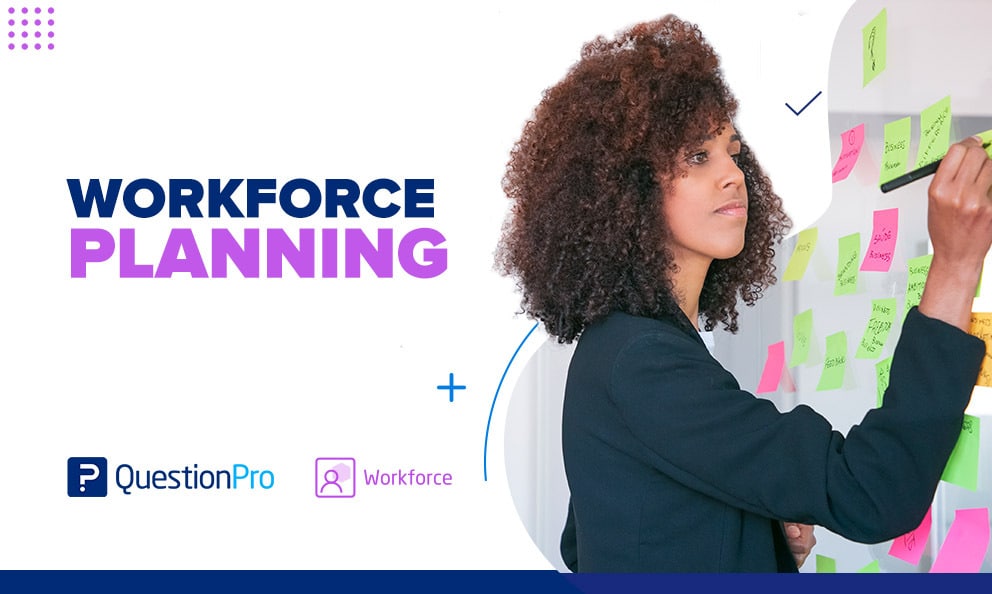
The future of work is fast approaching, and most companies are not prepared for what’s coming—especially those that haven’t been making informed decisions based on the valuable data that’s available to them. Let’s talk about workforce planning.
Having this data analyzed and taken into account when designing the future of your organization can help you make the right calls for your people, something that is more critical than ever.
LEARN ABOUT: Succession Planning
Companies must know the exact number of employees with the right skills that they should be hiring and retaining, so they can place them in the appropriate roles to ensure productivity and profitability. Workforce planning helps organizations deliver better decisions, products, and results to people. In other words: what actually matters.
What is workforce planning?
Strategic workforce planning is the process of analyzing, forecasting, and planning workforce supply and demand. Organizations may plan effectively to ensure their organization has suitably skilled employees in the right roles by identifying talent management gaps, developing employee management procedures, and developing recruitment strategies.
LEARN ABOUT: Employee Experience Strategy
Today, companies must innovate better than ever. To achieve this, they need talented people who can handle those demands. This forces organizations to work more efficiently, finding ways to keep costs low and maximize their budget without compromising the quality of work.
If implemented correctly, the benefits of workforce planning include:
- Helps companies make the best decisions in terms of how to structure their workforce.
- Improves control over unplanned talent costs and employee productivity.
- It provides enhanced visibility into talent demand and supply issues that emerge in your business.
- Allows access to information related to talent decisions, whether they are working efficiently, and whether changes need to be made in the future.
Key steps in the workforce planning process
Now that we know that workforce planning is essential to the success of many organizations, for this planning process to be successful, there are a few steps that can be followed:
Align to your business goals
Concerning talent development, your business objectives will indicate what interventions and learning programs should be developed to provide the mix of skills required for the company. It will also provide information on identifying and motivating the best employees to retain them.
Through this process, gaps will begin to emerge. This process will raise the question of how the organization should mitigate any skills shortages resulting from repositioning and growing the business.
- Make sure you have an accurate picture of the current workforce and trends within the organization
For this process to be effective, the HR professionals performing in workplace this activity must have access to robust data and analytics about the current workforce, often this data can be managed by positive people science teams that analyze, interpret, and act on people data.
In today’s workplace, there are three main workforce models: the office workforce, working in a central location; the mobile workforce, which operates remotely or in the field; and the hybrid workforce, combining office and remote work. Each model offers unique advantages and adaptability to meet the demands of modern business.
LEARN ABOUT: HR Analytics
This data can be labor turnover statistics by role type or division, recruitment data, time of hire, demographic information, seniority, and salary.
Identify any gaps
This gap analysis should include areas of skills shortages, headcount reduction areas, employee turnover rates, succession planning predictions, and talent acquisition metrics that predict time to hire and cost of hiring.
Establish a plan to address the gaps
An effective plan to close the gaps should be an essential part of any HR strategy as it is key to increasing the capacity, capability, and productivity of the workforce.
The plan should identify which areas need to be addressed in what order of priority to best support business goals, it should include actions to recruit and retain the best quality employees for the company and ensure that the company’s processes and operating structure enable those people to do great work and perform at peak levels of performance.
When implemented correctly, workforce planning gives a company a competitive edge and strengthens its position due to the training and development of its workers.
If you’re looking to get started in workforce planning check out QuestionPro Workforce, a Culture and Employee Experience survey and workforce analytics platform that provides meaningful analytics and insights about your people and can help you drive the best kind of change.







